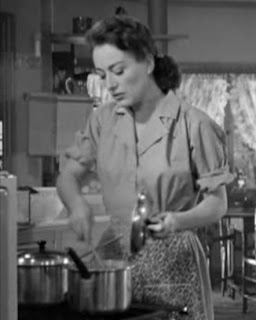Analyze the
portrayal of a queer character (lesbian, gay, bisexual, transgendered,
questioning) in a film of your choice. Please analyze 6 scenes from the
film. Build an argument around stereotypical representations of sexual
identity in film. Is the character a stereotype or counter-stereotype? Are they
punished or vilified in the film? What are some of the coded messages in the
film?
The movie chosen for this essay was “Transamerica”, which is
about a pre-operative male-to-female transsexual who finds out that she has a
son. The main character Bree Osbourne, is trying to get a vaginoplasty after
having waited a year for this surgery, however, her therapist thinks it best
that she does not renounce her past and forget about the son she never knew
existed, who was currently in jail in New York. Her therapist refuses her
permission to get the operation if she does not face her past and go to her son
to work things out. After meeting her son she finds that there are a lot more
problems awaiting her on her journey.
The first scene analyzed is when Bree is talking to her
therapist. While talking to her therapist she mentions that she recently found
out that she may possibly have a son, but believes it to be a scam considering
she only has her Vaginoplasty on her mind and wouldn’t want anything to get in
the way of it. Her therapist says that
she can’t just dismiss her past entirely because it may affect her in a way
that isn’t good for her and it would be best to see how meeting her son would
change her. The therapist then refused to give an approval for the vaginoplasty
unless Bree went to her son and tried to see how things go.
The next scene to be analyzed is Bree with her new found son.
She refuses to tell him at first that she is actually a male, and his father,
instead she tells him that she works with a church. Her son is a drug hustling
male prostitute who is just getting by living in an old run down dirty
apartment.
Another scene is when they are back in Toby’s, Bree’s son,
home where his step father lives. As it turns out Bree thought she was doing a
good thing by bringing him home to his step father, when infact all it did was
make things worse for Toby considering his step father molested him as a child
and after Toby confronted him in front of Bree, his step father started hitting
him in which the neighbour then took a machine and hit Toby’s step father over
the head with.
Fourth, is when Bree and Toby are on the road and Bree has to
pull over to use the washroom. As she is peeing behind the car, Toby notices
that Bree is holding her penis standing and peeing. He then gets upset with her
immediately and stops talking to her and calling her a freak saying that she
has been lying to him this entire time. He then tells the people they encounter
this lady is no lady, she is a man with a penis, thus embarrassing Bree
publicly.
Fifth scene to analyze is when Bree and Toby go to Bree’s
parent’s house. They immediately start off negative with the parents slamming
the door on Bree because her mother is not accepting of her son’s
transformation. As he eventually is let inside his mother yells at him and asks
about what happened to her boy and why did he do this, she then grabs Bree’s
crotch to verify that she still has a penis. She ended up happy knowing that
Bree was not yet complete with her transformation, however she broke down in
tears when Bree grabbed her mother by the hand and placed it on her chest
showing her that she is still undergoing transformation.
Sixth, is where Bree is in her room and Toby enters wearing a
robe. He then sits on her bed and holds her hand and she is happy thinking he
is really caring for her like a mother. However, Toby kisses Bree and confesses
that he loves her and would get married to her. This is when Bree admits to
Toby that she is his father, he then furiously storms out of the room with Bree
following fast pleading to him to listen and understand. He then hits her and
says that she is not his father and ends up missing. He later visits Bree at
home and shows her that he is doing well and is now a gay porn actor, and can
accept that Bree is his father.
I think the character of Bree is a stereotypical
transgendered, because she does identify with a gender that is not her
biological sex, and is an effeminate male cross-dresser. The way her appearance
looks can be considered stereotypical considering she keeps long pink nails and
tends to wear bright colours such as pink.
At times in this movie, Bree was vilified by Toby her son,
and her mother. At first Toby called Bree a freak for having a penis yet being
the way she is, he then retracted that comment of her being a freak considering
he didn’t mean it, he was just upset that she had been lying to him this entire
time. Later on in the movie Bree is vilified by her own mother, who treats her
horribly because she wishes to be a woman when she in fact was born a man. Her
mother who is very against the idea of Bree’s sexuality because she is
homophobic and states they she loves her but cannot respect her.
There are many messages in this film, such as being who you
are regardless of what other people say or do, and how they treat you. Another
message could be that you shouldn’t give up on people because they can surprise
you.








